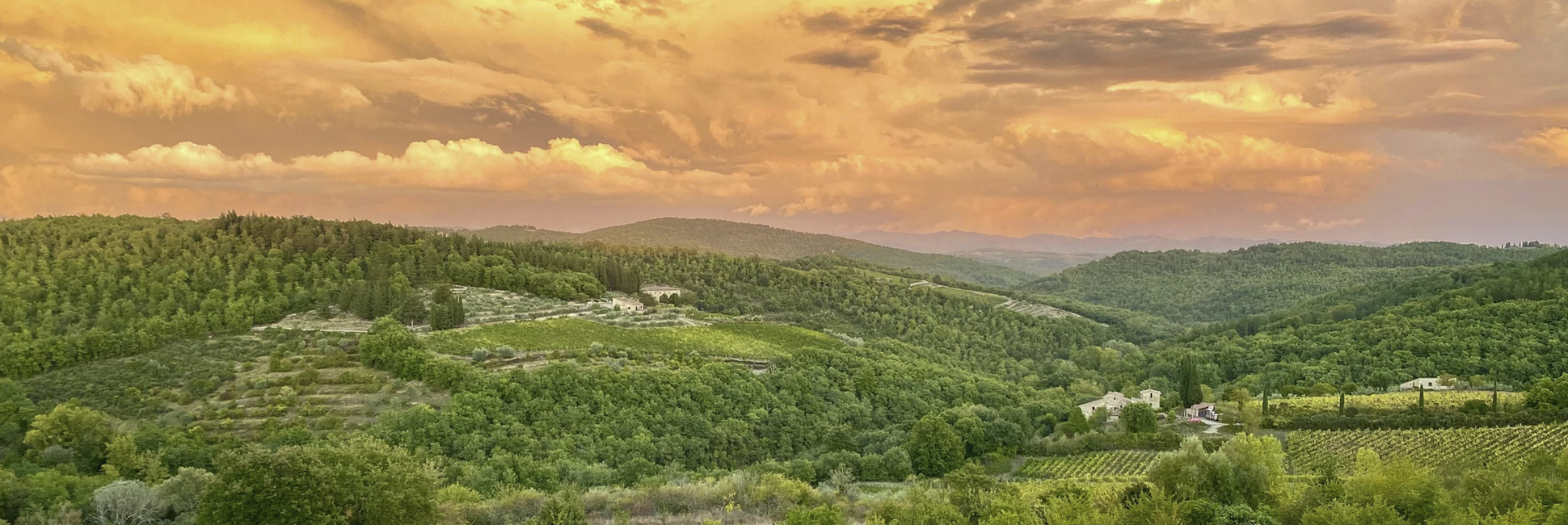Chianti area
We start this itinerary going out from Porta Ovile, one of the monumental ancient gates of Siena. Built during the XIII Century and renovated int he Renaissance period.
Continuing to Ponte a Bozzone, the road is lined with renovated farmhouses, some manors and farmhouses in ruins, evidence of the painful choices by the villagers to leave the countryside for the city, during the mid-twentieth.
Then, to Pievasciata the road is beautiful. Facing a geometrical alternation of cultivated and wooded areas, giving to the landscape the recognition as homeland of wine and oil.
The villa di Geggiano and its precious garden, represent a rare historical and landscape location. Cerretaccio instead, where brigands and Sienese exile fund refuge, given its position, for centuries, since 1087, with varying fortunes, defended the borders of the Sienese Republic. The Pieve of San Giovanni Battista, in Pievasciata, a Romanesque building, can be a surprise for visitors. You are in the heart of the Gallo Nero production area, between Castelnuovo Berardenga and Gaiole in Chanti.
Crossed areas
Many have written about Siena and its harmonious beauty, in all times, and it is difficult to invent new words to describe its charm, especially if you are not poets. UNESCO declared it a World Heritage Site in 1995.
José Saramago, a Portuguese writer and Nobel Prize winner, was in love with the city and dedicated words that describe it with brushstrokes of deep emotion and passion.
“And here is Siena, the beloved, the city where my heart is truly pleased”. “The three hills on which it is built make it a city where there are no two equal roads, all contrary to submit to any geometry”. “This wonderful color, the color of the body browned by the sun, but that is also the color of the crust of the corn bread, this wonderful color goes from the stones to the road and to the roofs, softens the sunlight and erases the anxieties and fears from the face”.
“There can be nothing more beautiful than this city”. Piazza del Campo “a square inclined and curved like a shell, which the builders did not want to pave and remained so, as if it were a lap”.
“I look at the old palaces of Siena, ancient houses where I wish I could live one day, with a window of my own, overlooking the clay-colored roofs, the green shutters of the windows, as in the attempt to decipher where this secret comes from that Siena murmurs and that I will continue to hear, although I do not understand it, until the end of life”.
The Chianti countryside has become an icon for an almost ideal landscape: alternating hills covered with dense woods, rows of vines and some silver brushstrokes of olive groves. In the replicated design, the ‘farmhouses’, cottages with lodge and dovecotes peek over the top of hills and meandering dirt tracks, bordered by low walls and towering cypress trees. Imposing villas, castles, abbeys and parish churches, small villages inspired by centuries of people who lived in these places and made history.
From the Middle Ages to today this landscape, known and recognized throughout the world, has been shaped by humanity’s blood, sweat and tears, creating a place tailored to its needs, without squeezing or exploiting the earth, but indulging generosity and refining the production of its most precious fruits with skill and ingenuity: grapes and olives.
The resulting robust wines with a round and intense flavour, and a flavoured and sour oil that enhances the flavour of savoury dishes of a cuisine still rich in vegetable products, the courtyard and hunting dishes, as it has always taken place in the peasant tradition, being the creator of a still recognizable and unique culture rooted in this land.
